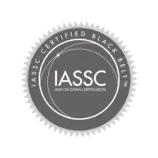
Efficient IT project management is essential for delivering projects on time, within budget, and to the highest quality standards. By leveraging tools like Jira, following Agile and Scrum methodologies, and adhering to PMBOK best practices, your projects can achieve outstanding results.
Our IT project managers are certified professionals with expertise in Agile, Scrum, and PMBOK frameworks.
Scrum fosters better team communication and collaboration through regular check-ins, clear roles, and structured workflows, ensuring alignment and boosting productivity.
Agile methodologies keep teams flexible and responsive, enabling quick adjustments to feedback or shifting priorities, ensuring projects stay on course despite challenges.
Structured PMBOK practices identify and manage risks early, reducing project delays, budget overruns, and quality issues, leading to more successful outcomes.
The first step in any project is to define your objectives, scope, and key stakeholders. This is where you lay the foundation for everything that follows. Clear communication at this stage ensures everyone is on the same page, and it sets you up for success from the get-go.
Once you know where you’re headed, it’s time to map out how to get there. Develop a detailed project plan that includes timelines, resources, and milestones. This roadmap will be your guide, helping you stay on track and making sure nothing important slips through the cracks.
Life is unpredictable, and projects are no different. By applying Agile methodologies, you can break your project into manageable tasks, allowing for flexibility and continuous improvement. Sprint planning is a great way to keep your team focused and productive, while still being able to adapt to changes along the way.
With Scrum, your team can work more collaboratively and efficiently. Regular check-ins, sprint reviews, and retrospectives ensure that everyone stays aligned, issues are addressed quickly, and the project keeps moving forward. It’s all about keeping the momentum going.
Even the best-laid plans need monitoring. Using PMBOK best practices, you can keep a close eye on your project’s progress, manage risks, and ensure quality. It’s like having a safety net that catches potential problems before they become bigger issues.
When the project is done, take a moment to celebrate (you’ve earned it!). But also take the time to evaluate what went well and what could be improved. This reflection is crucial for learning and growth, setting you up for even greater success in your next project.
Imagine you’re managing a software development project. Initially, the project was using a traditional waterfall approach, and it quickly became clear that the team was struggling to meet deadlines. They were overwhelmed by the sheer scope of the work, and as a result, productivity dropped.
Solution: Implementing Agile Sprint Planning
Impact:
A marketing team was working on a major product launch involving design, content, social media, and analytics. Initially, each department worked independently, leading to communication breakdowns, delays, and frustration.
Challenges:
Solution: Implementing Scrum
The team adopted Scrum, reorganizing into cross-functional teams. Daily stand-ups were introduced to improve communication, and the project was divided into two-week sprints, allowing for incremental progress and continuous feedback. After each sprint, retrospectives helped refine processes and boost efficiency.
Results:
Impact:
Encourage collaboration across departments by forming cross-functional teams, ensuring that everyone works together towards common project goals, leading to more cohesive and efficient outcomes.
Implement Agile sprint planning to break down projects into manageable tasks. This approach provides flexibility, allows for continuous improvement, and helps teams adapt quickly to changes.
Utilize daily stand-up meetings to keep teams aligned, address obstacles promptly, and ensure that everyone is aware of the project’s progress, fostering transparency and accountability.
Adopt tools and practices for real-time monitoring of project progress. This feature helps in identifying potential risks early, making necessary adjustments, and ensuring the project stays on track.
Hold regular retrospectives after each sprint or project phase to reflect on what went well and identify areas for improvement. This promotes a culture of learning and ongoing refinement.
Optimize resource allocation by tailoring it to the specific needs of each project. This ensures that the right people and tools are focused on the right tasks, maximizing efficiency and effectiveness.
Alicante, Spain EU
Firenze, Italy EU
London, Bexleyheath, UK
Karachi, Pakistan
hello@quickers.com













See how Quickers Venture Builder drives innovation with advanced Deep Tech Infrastructure